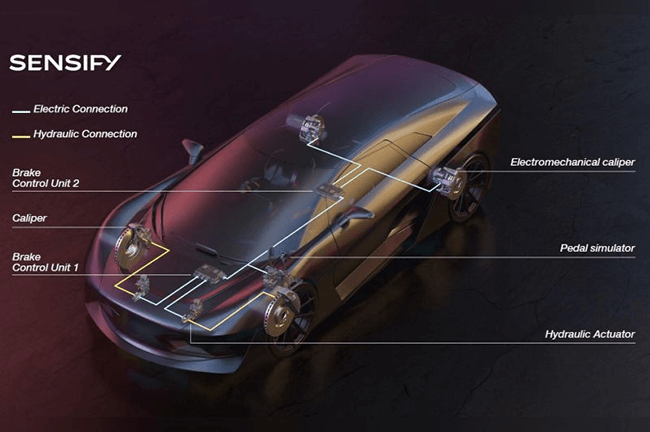Brembo’s revolutionary active-braking system
09-11-2021 | By Robin Mitchell
Recently, Brembo announced that it will be launching its active brake system by 2024. What challenges do current brake systems face, what are active brakes, and could they become commonplace?
What challenges do braking systems face?
Of all the parts that make up a modern automotive system, the braking system is by far the most important. Sure, an engine provides power to move the vehicle, and steering allows the vehicle to change direction, but the brakes are what prevents the vehicle from moving. A stationary vehicle can roll down a hill without brakes and cause significant damage either by running over people, hitting property, or blocking traffic.
As brakes are so important, intelligent brake systems have been developed to ensure reliability, report malfunctions, and even improve driving when faced with emergency stops (i.e. ABS). However, for all their brilliance, brakes still face challenges that need to be considered by both the manufacturer and driver.
Firstly, brakes naturally wear down over time and are required to be frequently serviced (this is done during a vehicle annual service and/or millage service). Secondly, brakes are controlled via hydraulics, but all wheels connect to the same hydraulic line meaning that any application of the break will result in all wheels braking simultaneously.
For standard driving, having all wheels brake simultaneously is desired as it provides maximum resistance, but during situations such as slipping and uneven road services, having all four wheels brake is not necessarily ideal. A more intelligent system would only disable a wheel break if the wheel was at risk of wheel lock (where the wheel stops spinning but is still moving across the ground).

Brembo announces 2024 launch for active brake system
Recently, Brembo announced that they will be releasing a revolutionary wheel braking system in 2024 called Sensify. The new system is drastically different from all other braking systems currently in use in automotive. Each axel in a car is individually controlled (whereas standard cars have all axels braking identically).
This new system will have many advantages over traditional braking systems thanks to the integration of intelligent electronic monitoring systems. To start, Sensify will be able to detect if any individual brake is overheating. If detected, Sensify can decrease the force on the overheated brake while increasing the force on all other brakes.
Secondly, the new system will provide better ABS action as each wheel can have its braking force altered as needed. Thus, if one wheel slips on a puddle or ice sheet (while all other wheels are on the perfectly fine road), only the wheel that is locking will be released while all other wheels continue to brake.
Thirdly, the ability to control the force exerted on each brake allows for Sensify to brake economically. If one brake is found to be exerting more force than the others, the system will be able to better balance the forces and thus reduce the wear and tear on any individual brake.
Could active brakes become commonplace?
In their announcement, Brembo (famous for braking systems) made it clear that their brakes would become commonplace in high-spec vehicles, but their use could spread to all vehicles over the next few decades. Intelligent systems such as Sensify could provide drivers better control and even help to prevent dangerous situations from occurring by extending brake life.
However, it should be noted that current brake systems use hydraulic lines directly between the brakes and the foot pedal as this is arguably the most secure system. If electronic systems sit in between the pedal and brakes, then any fault in the electrical system could disable braking. The same argument can be made about any other control-by-wire system in a vehicle, but the braking system is arguably the most important and cannot afford to fail.
The advantage of a hydraulic system is that a driver can tell if the braking is faulty or not functioning simply by applying pressure to the brake pedal; it can go right to the floor, feel spongy, or be too hard to press. However, an electronic system is just a position sensor with some resistance, and thus difficult to determine if the brakes are failing.
Overall, active braking can provide significant benefits to cars during dangerous scenarios, but their reliability must be so great that an active braking system failure is an impossibility.

